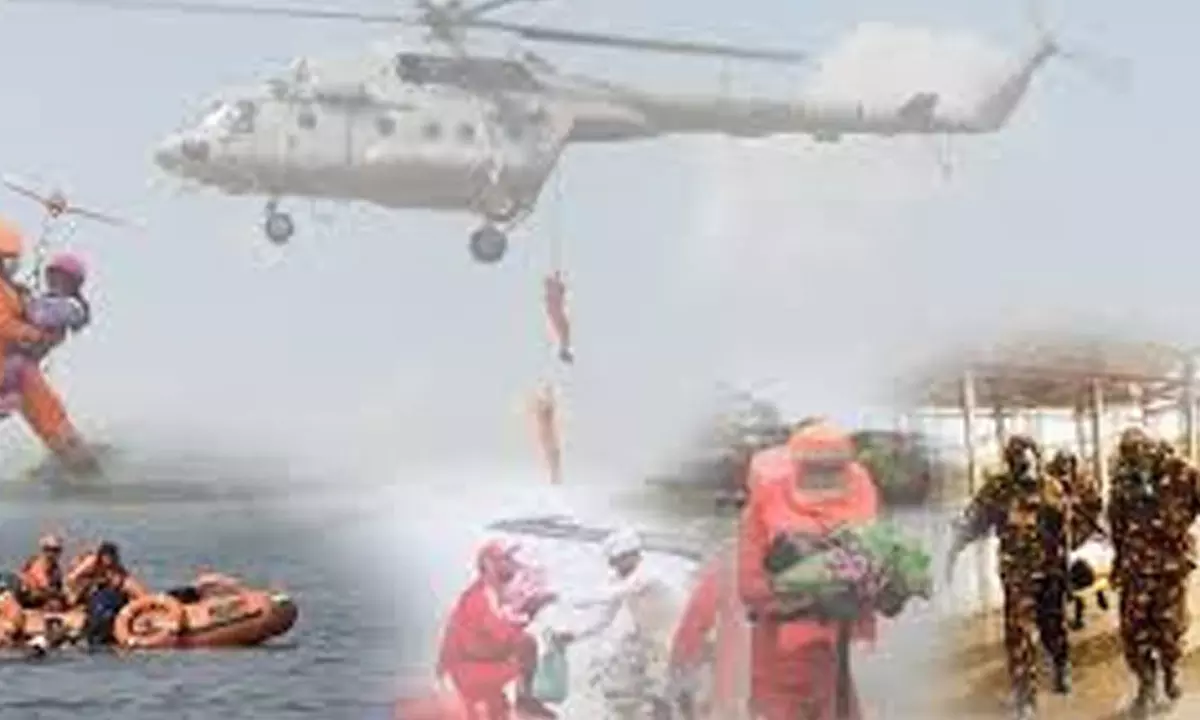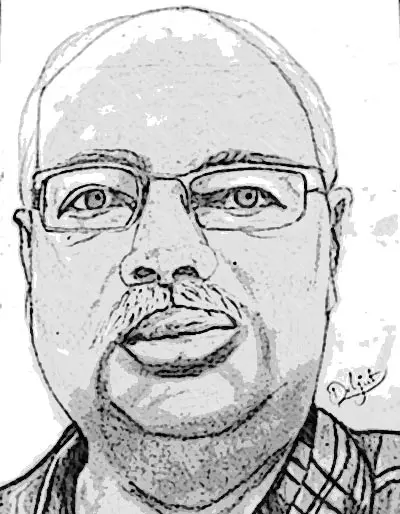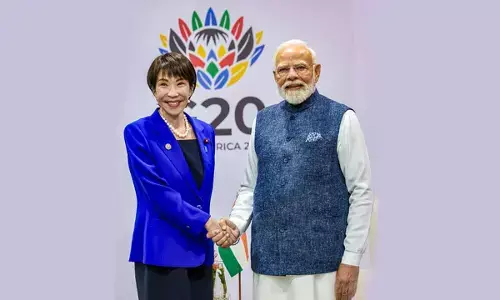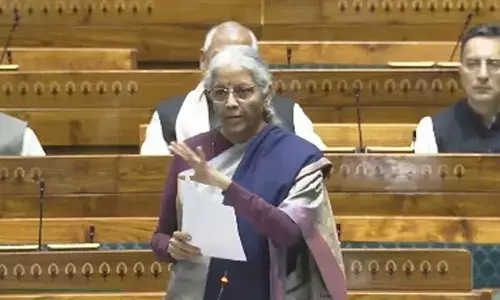Learn to talk less and work more

Learn to talk less and work more
What politicos can and must do during disasters
India is vulnerable to many natural as well as man-made disasters. About 12 per cent of land (approx. 6,000 sq km) is prone to floods, cyclones, tsunamis and river erosion. Similarly, close to 60 per cent of landmass is susceptible to earthquakes.
Hence, disaster management assumes great importance. But, experience shows that there are very few state governments which have mastered the art of disaster management. The present genre of politicians do not focus on integration of technology in disaster management as they should. They speak high but that does not reflect in their actions. During calamities, they suddenly wake up and indulge in some knee-jerk reaction and, hence, in many states and towns including the much-hyped global cities such as Hyderabad and Bengaluru, even the problem of flooding of roads and low-lying areas during monsoon could not be resolved.
Politicians do not get tired of lecturing on the need to protect environment while it is they who unabashedly indulge in its destruction. Instead of taking measures to emerge as the most efficient managers of disasters, many state governments neglect this aspect. There are very few governments which have mastered the art of disaster management.
Andhra Pradesh was one such state which woke up early and was the best in disaster management. Its efficiency was at full display in the 1999 when neighbouring Odisha was hit by super cyclone. It was the AP team of officials and disaster management teams which were the first to take up rescue operations even before the armed forces arrived. After this, the Odisha government realised its mistake and according to one of the ministers in the present government, they felt ashamed of their lack of skills. Hence, soon after the super cyclone impact was over, the Odisha government gave the highest importance to disaster management and today it is among the top states in the country in handling natural calamities. Sadly, Andhra Pradesh which was their role model has badly slipped.
The Odisha government’s years of investment in capacity building and procuring state-of-the art equipment to handle disasters paid off during the 51-hour rescue operations following the triple train accident at Balasore, Many works had to be carried out for the restoration of the railway track. It was a long list. Coaches had to be removed, dead bodies were to be taken out from the bogies and sent for post-mortem. They had to be covered with a white sheet on the side of tracks; officials had to clear the tracks and repair them, fix overhead cables, shift the injured to hospitals, embalm the dead bodies which were not claimed and also handle VVIP movement. These days the political leaders use private jets just as a common man uses cabs, though their visits do not serve any purpose except hampering relief operations.
This kind of political tourism during calamities should be controlled first. What do they serve by visiting the site of accident or a place inundated with floods or cyclone-affected areas? Their instant reaction would be that the government has failed, CM must resign – the demand comes at a time when people are in the midst of calamity. Their contribution in rescue operations is virtually zero.
Gujarat is among the few governments which have best disaster management systems in place. This was clearly established during the ongoing Biparjoy cyclone which has all the potential to rip apart the state and could have resulted in a major catastrophe. From day one, after the alert given by the IMD, the State government and all its wings swung into action. They evacuated over one lakh people to safer places three days ahead of the landfall of Biparjoy. Not just that, there were no complaints of poor facilities like non-availability of food or water. On the top of it, the government even organised some programmes to protect the children in shelter homes from negative psychological impact and fear. This is something which is rather a unique act.
Unlike leaders and ministers of many ruling parties, the home minister of Gujarat was seen working with Army jawans and NDRF teams in rescue operations braving the rough weather and winds of over 100 km speed at Dwarka when electric poles and trees were uprooted. He was not interested in giving bytes to media, his top priority was to clear the roads, something which the politicians of Telugu states need to learn and emulate, and not indulge in tongue lashing, coming in the way of rescue teams. They take pains to stress how visionary and large-hearted their Chief Ministers are in announcing compensation. Are the ruling parties giving their money?
The efficiency of Gujarat could be gleaned from the fact that it succeeded in zero loss of life and hence there was no need to give compensation for loss of life. No one can stop destruction of property but in 24 hours after landfall, they had been able to clear the poles and trees and from Sunday, people may be allowed to go back to their homes. That is the advantage of ‘Talk Less and Work More’ concept.
When Kedarnath in Uttarakhand received floods in 2013 due to melting of Chorabari glacier and when one of the glacier’s two snouts, which is the source of Mandakini River, caused the eruption of the river and caused a huge damage including landslides and snowfall resulting in tourists getting stuck on road, in hotels and lodges, it was the team of Army, Air Force, National Disaster Response Force, Indo-Tibetan Border Police and local authorities who carried out the toughest relief operation. The fury of the floods was such that bank carried away homes, lives and everything that came its way and over 5,000 people lost lives. But then the credit goes to the armed forces and NDRF which risked their lives and restored normalcy. The terrain is such that floods could not be predicted in advance, unlike in the case of Biporjoy cyclone. The conditions there were the toughest. Many opposition parties raised hue and cry after normalcy was restored but none dared join the relief works. On the other hand, local leaders, it is alleged, stopped relief trucks which went there from across the country and claimed that it was they who had organised the relief material.
Let’s also look at Manipur violence. We are hearing statements which sound juvenile. Some say hate politics was on. Some feel the Chief Minister was the main hurdle in restoring peace. All of them are interested only in vote bank politics and speak as if the clashes between the Kukis and the Meiteis are taking place for the first time under the NDA regime. The neo-politicians are not interested in dwelling deep into the cause and find a solution.
One simple question that I would like to ask the modern-day politicians including Rahul Gandhi is whether they can tell us what per cent of cultivable land is vulnerable to drought, how many hilly areas are at risk from landslides and avalanches and what do they know about why cyclones are rising on the west coast, without asking google or falling back on Artificial Intelligence?
Theatrics like travelling by specially organised trucks or someone claiming that during elections it is not parties that should win but people do not help in bringing quantum change in the lives of the people. In India, people can never win if the political parties continue to buy votes and compete in distribution of freebies.














